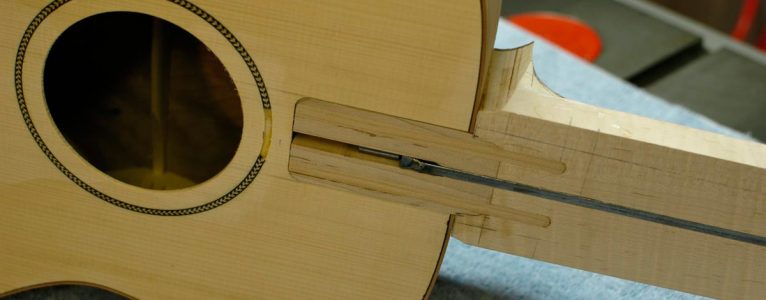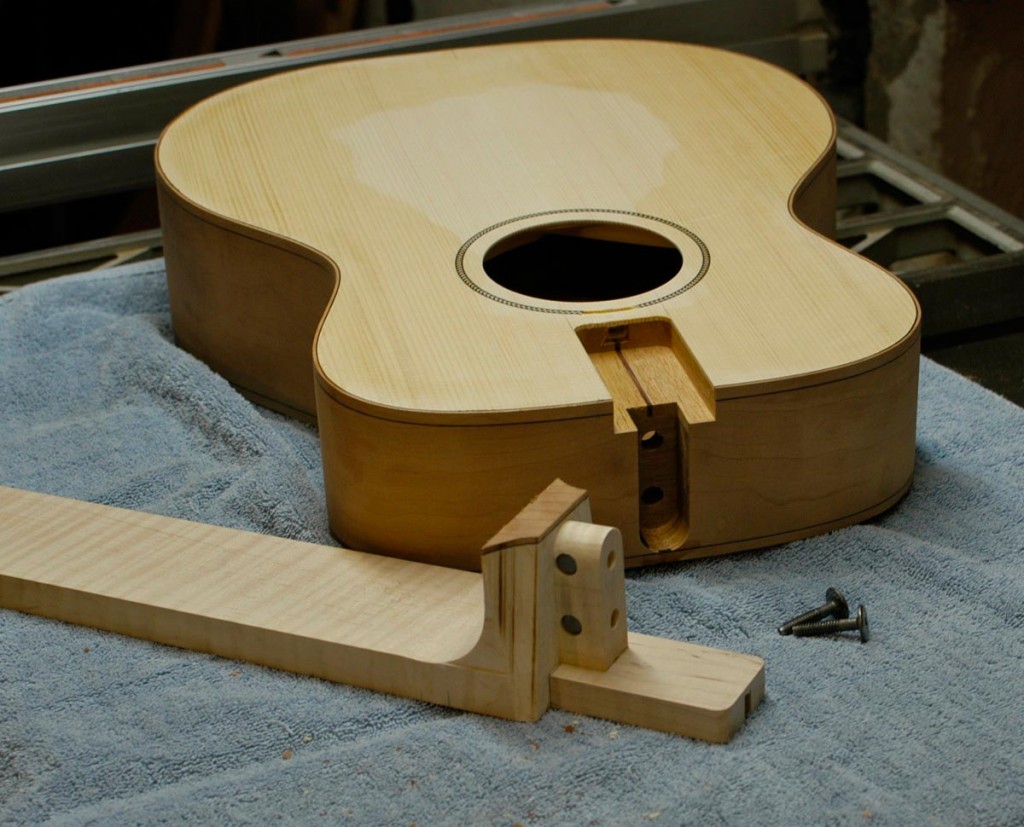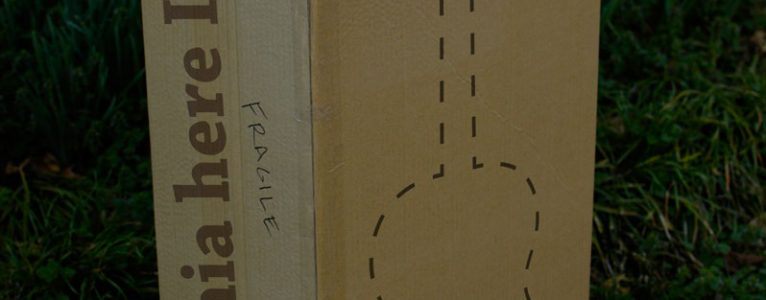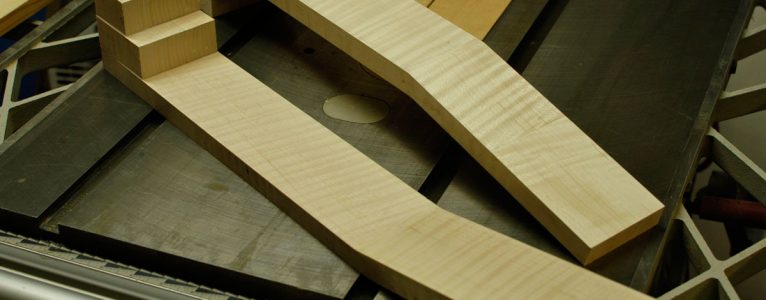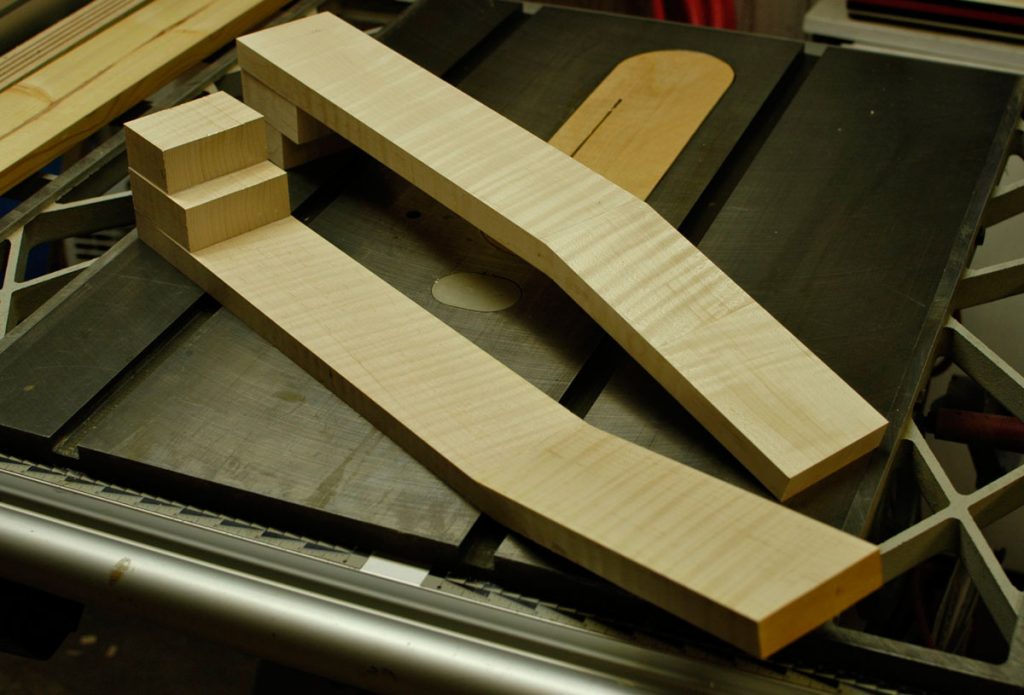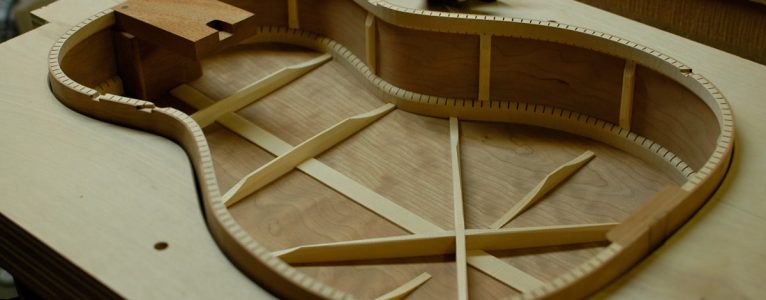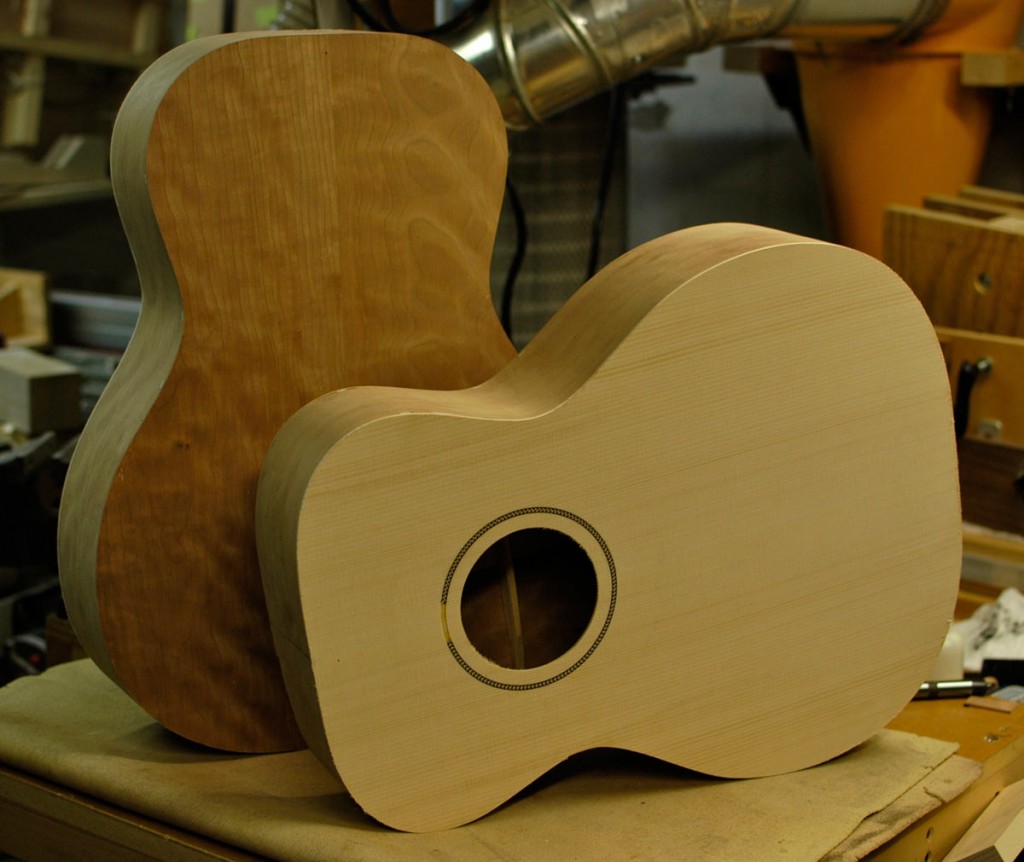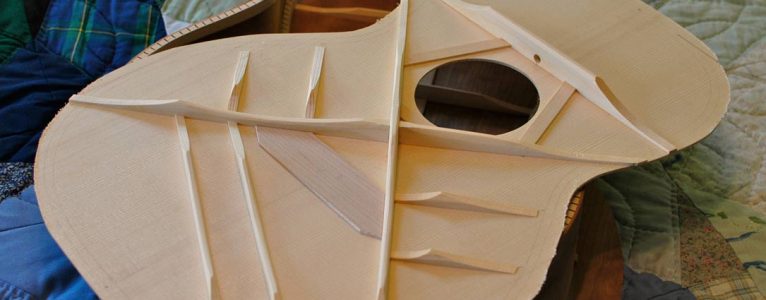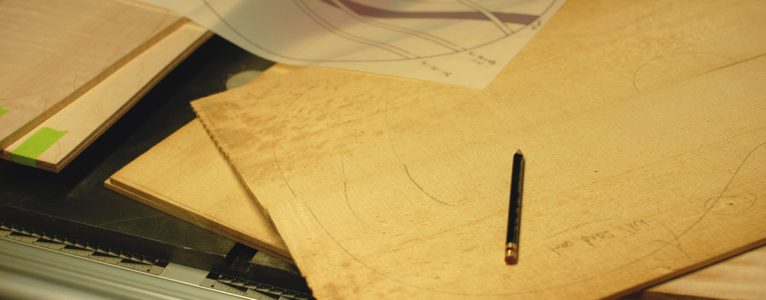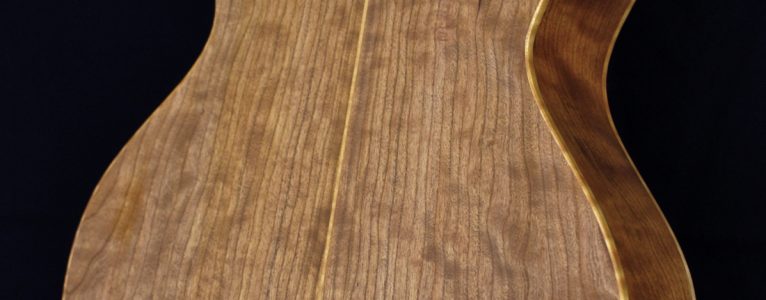The neck is attached to the guitar using four bolts and no glue, so it’s easy to take off for future repairs. Continue reading “Neck Joint for the Auditorium and Orchestra Prototypes”
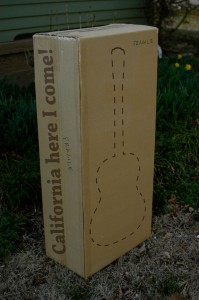 Today I boxed up number one for shipping to its new home in California.
Today I boxed up number one for shipping to its new home in California.
I gave it a last once-over and played it (just a little). The voice has really come in on this guitar! It’s quite rewarding to hear one of your own instruments mature, and that’s especially true of Adirondack spruce-topped instruments; they just take a bit of time to settle in and open up.
Even more rewarding is that I got to hear the new owner take the guitar for a test drive when he was in town recently. This guitar is a perfect match for his playing style, with plenty of meaty tone up the neck. For the guitar maker, hearing a player/instrument match like that is exhilarating. Here’s to more great matches in the future!
Stacked-heel, scarf-jointed necks in red maple Continue reading “Neck Blanks & Bindings for the Auditorium and Orchestra Prototypes”
Front: orchestra prototype showing Adirondack spruce.
Behind: auditorium prototype showing American cherry. Continue reading “Closing the Box on the Auditorium & Orchestra Prototypes”
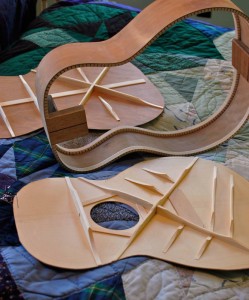 I’m about ready to close the boxes on my Orchestra & Auditorium prototypes and thought I would share a little bit about how they are coming together. I’m using Adirondack spruce tops with light and strong Adi bracing. I’m still amazed at how stiff this brace wood is, when properly cut. I’ve finished carving the braces for the tops and backs and the plates sound good. Here’s a little recording of the thump test.
I’m about ready to close the boxes on my Orchestra & Auditorium prototypes and thought I would share a little bit about how they are coming together. I’m using Adirondack spruce tops with light and strong Adi bracing. I’m still amazed at how stiff this brace wood is, when properly cut. I’ve finished carving the braces for the tops and backs and the plates sound good. Here’s a little recording of the thump test.
Continue reading “Progress: Orchestra & Auditorium Prototypes”
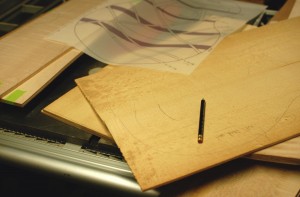 There seems to quite a bit of variation in what people (and companies) mean when they say “handmade.”
There seems to quite a bit of variation in what people (and companies) mean when they say “handmade.”
So, I thought it would help if I explain what I mean.
If you’ve talked to me, you know that I think wood is the heart of the sound of a guitar. This process—starting with the best materials for the job—can’t be done by the pallet-load; I look individually through a lot of wood to find the pieces that look, feel and sound good to me. Plus, I’m lucky to have good relationships with my wood suppliers, and I take their advice and expertise seriously. Consequently, I get great pieces of wood that have the structural advantages I want.
Continue reading “What I Mean by Handmade, Part 1”
I’ve been thinking a lot about the design of my auditorium/000/orchestra model.
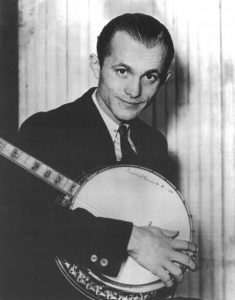 I’ve been reading up on the early history of the instruments, and it’s pretty interesting. As I’ve mentioned elsewhere, the orchestra model was built in cooperation with Perry Bechtel, virtuoso plectrum banjo player. He approached Martin Guitars in 1929, wanting a guitar with a long scale length (27″!) and 15 frets clear of the body, based on the largest guitar that Martin made at the time, the 000.
I’ve been reading up on the early history of the instruments, and it’s pretty interesting. As I’ve mentioned elsewhere, the orchestra model was built in cooperation with Perry Bechtel, virtuoso plectrum banjo player. He approached Martin Guitars in 1929, wanting a guitar with a long scale length (27″!) and 15 frets clear of the body, based on the largest guitar that Martin made at the time, the 000.
Martin’s guitars up to that point had 12 frets clear of the body. According to a great article by George Gruhn, Gibson had been making guitars with 14 frets clear of the body since the L-5 was introduced in 1923. Our 1929 Gibson TG-0 tenor guitar has 15 frets clear of the body, so you can see where Bechtel got that number—maybe he was playing one of those!
Continue reading “Designing the Orchestra/Auditorium Model, Part 1”
Here’s the tenor I’ve been dreaming of. This was built based on a very cool Gibson TG-0, with a few twists thrown in to make it my own. The big change I made was building the top on a light X-brace pattern rather than the ladder-braced scheme of the original. The sound of this little guitar is incredible. It has a throaty, full bass end with a bright, Adirondack spruce-chime on the high end. It pairs really well with the grand concert guitars I’ve been building, in case you’ve been having Delmore Brothers-inspired thoughts like I have.
Continue reading “Tenor Prototype”
